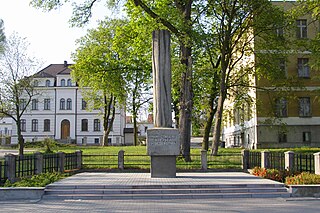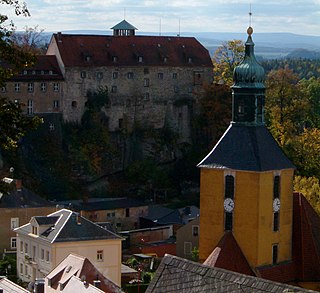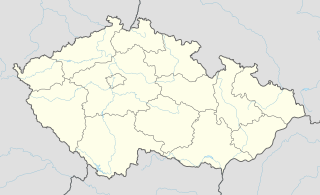 W
WAn Oflag was a type of prisoner of war camp for officers which the German Army established in World War I in accordance with the requirements of the 1899 Hague Convention, and in World War II in accordance with the requirements of the Geneva Convention (1929).
 W
WOflag 64 was a World War II German prisoner-of-war camp for officers located at Szubin a few miles south of Bydgoszcz, in Pomorze, Poland, which at that time was occupied by Nazi Germany. It was probably the only German POW camp set up exclusively for U.S. Army ground component officers. At most other camps there were several nationalities, although they were usually separated into national compounds.
 W
WOflag 79 was a German World War II prisoner-of-war camp for Allied officers. The camp was located at Waggum near Braunschweig in Germany, also known by the English name of Brunswick. It was located in a three-story brick building that had previously been the home of a German parachute regiment, near the Hermann Göring aircraft engine factory.
 W
WOflag II-A was a German World War II prisoner-of-war camp located in the town of Prenzlau, Brandenburg, 93 kilometres (58 mi) north of Berlin.
 W
WOflag II-C Woldenburg was a German World War II prisoner-of-war camp located about 1 kilometre (0.62 mi) from the town of Woldenberg, Brandenburg. The camp housed Polish officers and orderlies and had an area of 25 hectares with 25 brick huts for prisoners and another six for kitchens, class-rooms, theater, and administration.
 W
WOflag II-D was a World War II German prisoner-of-war camp located at Gross Born, Pomerania. In the late 1930s the German Army built a large base and training ground at which the XIX Army Corps of General Heinz Guderian was based.
 W
WStalag 383 was a German World War II Prisoner of War camp located in Hohenfels, Bavaria.
 W
WOflag IV-A was a World War II German POW camp for officers located in the 15th-century Burg Hohnstein, in Hohnstein, Saxony.
 W
WOflag IV-B Koenigstein was a Nazi POW camp for Allied officers during World War II. It was located in Festung Königstein near the town of Königstein in Saxony.
 W
WOflag IV-C, often referred to by its location at Colditz Castle, overlooking Colditz, Saxony, was one of the most noted German Army prisoner-of-war camps for captured enemy officers during World War II; Oflag is a shortening of Offizierslager, meaning "officers camp".
 W
WOflag IX-C was a German prisoner-of-war camp for officers (Offizierlager) during World War II, located just to the south of the village of Molsdorf, near Erfurt in Thuringia.
 W
WOflag V-B was a World War II German prisoner-of-war camp for officers (Offizierlager), in operation from 1940 until 1942. It was located in Biberach in south-eastern Baden-Württemberg.
 W
WOflag VI-B was a World War II German prisoner-of-war camp for officers (Offizerlager), 1 km (0.6 mi) southwest of the village of Dössel in northwestern Germany.
 W
WOflag VII-A Murnau was a German Army POW camp for Polish Army officers during World War II. It was located 2 km (1.2 mi) north of the Bavarian town of Murnau am Staffelsee.
 W
WOflag VII-B was a World War II German prisoner-of-war camp for officers (Offizierlager), located in Eichstätt, Bavaria, about 100 km (62 mi) north of Munich.
 W
WOflag VII-C was a World War II German prisoner-of-war camp for officers located in Laufen Castle, in Laufen in south-eastern Bavaria from 1940 to 1942. Most of the prisoners were British officers captured during the Battle of France in 1940. To relieve overcrowding, some of the officers were transferred to Oflag VII-C/Z in Tittmoning Castle. The Oflag existed only for a short time. In early 1942 all the officers were transferred to Oflag VII-B in Eichstätt.
 W
WOflag VII-D was a World War II German prisoner-of-war camp for officers (Offizierlager) located in Tittmoning Castle in south-eastern Bavaria.
 W
WOflag VIII-E was a World War II German prisoner-of-war camp for Allied general officers (Offizierlager) located in Johannisbrunn, Sudetenland.
 W
WOflag VIII-F was a World War II German prisoner-of-war camp for officers (Offizierlager) located first in Wahlstatt, Germany and then at Mährisch-Trübau, Protectorate of Bohemia and Moravia.
 W
WOflag X-B was a World War II German prisoner-of-war camp for officers (Offizierlager) located in Nienburg am Weser, Lower Saxony, in north-western Germany. Adjacent to it was the enlisted men's camp (Stammlager) Stalag X-C.
 W
WOflag X-C was a German World War II prisoner-of-war camp for officers (Offizierlager) in Lübeck in northern Germany. The camp was located on the corner of Friedhofsallee and Vorwerkstrasse, close to Lübeck's border with the town of Schwartau, and is often cited as being located in Schwartau rather than Lübeck.
 W
WOflag X-D was a German World War II prisoner-of-war camp for officers (Offizierlager) located in Fischbek, a Stadtteil of Hamburg, Germany.
 W
WOflag XII-B was a German World War II prisoner-of-war camp for officers (Offizierlager) located in the citadel of Mainz, in western Germany. The fortress had also served as an Oflag in World War I.
 W
WOflag XIII-A, Oflag XIII-B and Oflag XIII-D were all German World War II prisoner-of-war camp for officers (Offizierlager). They were all located on the old Nazi party rally grounds in Langwasser, Nuremberg, in northern Bavaria. They were adjacent to Stalag XIII-D.
 W
WOflag XIII-B was a German Army World War II prisoner-of-war camp for officers (Offizierslager), originally in the Langwasser district of Nuremberg. In 1943 it was moved to a site 3 km (1.9 mi) south of the town of Hammelburg in Lower Franconia, Bavaria, Germany.
 W
WOflag XVII-A was a German Army World War II prisoner-of-war camp for officers (Offizierlager) located between the villages of Edelbach and Döllersheim in the district of Zwettl in the Waldviertel region of north-eastern Austria.
 W
WOflag XXI-B and Stalag XXI-B were World War II German prisoner-of-war camps for officers and enlisted men, located at Szubin a few miles south of Bydgoszcz, in Pomorze, Poland, which at that time was occupied by Nazi Germany.
 W
WOflag XXI-C was a German Army World War II prisoner-of-war camp for officers (Offizierlager) located in Warthegau, a western province of Poland that had been incorporated into the German Reich in 1939. It held Norwegian officers arrested in 1942 and 1943. Originally most soldiers and officers had been released after the end of the Norwegian campaign, but as resistance activities increased, the officers were rearrested and sent to POW camps.
 W
WZero Night: The Untold Story of the Second World War's Most Daring Great Escape is a 2014 book by Mark Felton. It is about the 1942 mass allied escape from the German prisoner-of-war camp Oflag VI-B.